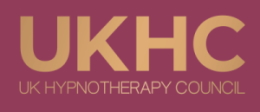Not only are there many approaches to inducing hypnosis, there are many existing debates as to the relevance, efficacy and validity of the induction in practice.
The October 2016 edition (volume 59) of the American Journal of Clinical Hypnosis has grabbed the fascinating topic of the hypnotic induction with both hands and I urge anyone with an interest in the field to investigate this superb edition. There is a whole wealth of knowledge and food for thought to be taken from this special edition.
Amongst the many interesting areas investigated and covered in the edition, is the article ‘Induction Technique: Beyond Simple Response to Suggestion’ (1).
The article reviews ‘The experimentally controlled research showing that the induction makes a difference and how small changes in wording of suggestions can produce orthogonal responses’.
Interestingly the article also seeks to explain ‘the principles of induction and three critical phases of hypnotic induction in detail.’
Before rounding off nicely with ‘An arm levitation scripted protocol demonstrating how to respond to the patient using the three phases to maximize responses to hypnotic suggestions’.
I want to share with you here the ‘three critical phases of hypnotic induction’ as explained in Barabasz and Marianne’s article:
Phase 1: The preparatory phase
During the preparatory phase descriptions of the desired hypnotic response are suggested. Suggestions are future tense orientated, to ensure they do not conflict with the person’s current experience, protecting rapport.
‘The key element of the preparatory phase is that you are protected from loss of rapport. When suggesting responses in the future tense when there is no behavioral evidence of them displayed by the participant yet’. (3)
Phase 2: The transition phase Once it can be observed that the responses suggested in the preparatory phase are occurring (ex. eye fluttering), the induction language shifts to the present tense. This affirms the hypnotic experience.
‘The participant’s concentration becomes effortless as they begin to dissociate and become unaware of all but the hypnotic activity. Moving on to this phase prematurely is a recipe for failure to achieve genuine hypnotic responsivity. This is the most common induction mistake. Then, even if you obtain an apparently positive response, it may only represent some sort of simple social compliance’. (2)
Phase 3: The hypnotic rapport phase
The hypnotic rapport phase is experienced when hypnotic responses are occurring automatically and without effort.
‘The hypnotic rapport phase constitutes the true hypnotic experience where the patient’s responses to hypnotic suggestions are perceived to be automatic (involuntary) and effortless’.
During the hypnotic rapport phase the therapeutic/clinical suggestions are given.
‘Rapport phase wording involves whatever is required by the clinical demands of the situation or the research protocol.’
Several rapport phase factors are listed as ‘true hypnotic phenomena’ (2) which would be either useful or vital to hypnotherapeutic change:
‘(a) increased responsiveness to suggestion, (b) attentional redistribution (if told to listen only to your voice, all else will be effortlessly ignored), (c) no desire to make plans—the here and now is all that they will focus on, (d) a reduction in reality testing where reality distortions are readily accepted (may uncritically accept hallucinated experiences, such as petting an imaginary rabbit), (e) the response of posthypnotic amnesia when so instructed as well as a restoration of what has transpired by posthypnotic signal, and (f) the ability to readily enact unusual roles when instructed to do so, such as reenacting behaviors characteristic of an earlier age or reconstruction, “re-living” of a significant prior event.’
Throughout the article the importance of both patience and congruence are given credence for advancing hypnotherapeutic practice.
On patience Barabasz writes; ‘Patience is also essential. I once took nearly an hour for an arm levitation induction to evoke minimal rising of a hand from a patient’s leg. However, once accomplished, the response to the induction became so profound that future hypnotic rapport was assured. Deep rapid inductions became the norm for this patient, which, in due course, helped to produce significant therapeutic gains and lasting positive life changes.’
The authors discuss the importance of a practitioner’s congruence with the ‘hypnotic modality’ citing; ‘No therapist, no matter how clever, can resonate with a patient while attempting to hide disbelief in the reality of the modality they are attempting to use’ (4)
The article closes; ‘it appears that when hypnotic inductions are carried out with attention to the participant’s responses and the established sequential progression of the three phases of induction, the changes produced by hypnosis can be surprising to the participant. Based on our observations of both patients and research participants, alterations in perception are often the most convincing of the potency of hypnosis per se because they go beyond simple motoric responses, such as arm immobilization and arm levitation, which can easily be produced by mundane responses to simple suggestion or compliance’
References
1) Barabasz, A., & Barabasz, M. (2016). Induction Technique: Beyond Simple Response to Suggestion. American Journal of Clinical Hypnosis Vol. 59, Iss. 2
2)
2) Barabasz, A., & Watkins, J. G. (2005). Hypnotherapeutic techniques (2nd ed.). New York, NY: Brunner – Routledge.
3) Barabasz, A., & Barabasz, M. (2016). Hypnotic phenomena and deepening techniques. In G. Elkins (Ed.), Handbook of medical and psychological hypnosis: Foundations, applications, and professional issues. New York, NY: Springer.
4) Newton, B. (2000, October). Is your hypnosis what you think it is? Paper presented at the Annual Workshops and Scientific program of the Society for Clinical and Experimental Hypnosis, Seattle, WA.
If you have recently read an interesting article or paper that you feel would be of benefit to the rest of the hypnotherapy community, I would be interested to hear from you.
Author: Dave Dorothy – PHN Research Officer

